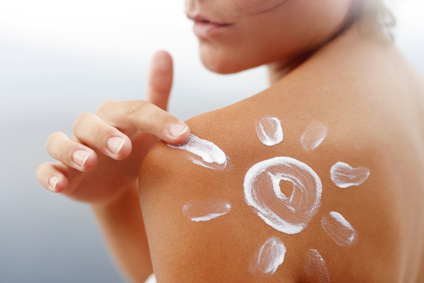
- Try to stay out of the sun when its rays are the strongest, between 10 a.m. and 4 p.m.
- Use a broad-spectrum sunscreen with zinc and SPF 30 or higher to protect against both UVA and UVB radiation.
- Apply sunscreen 15 minutes before exposure to the sun, and remember to reapply often.
- Cover up with protective clothing like long sleeves, a hat, and sunglasses. Some items of clothing have built-in SPF protection too.
- Avoid tanning, either in the sun or in a tanning bed.
- Beware of reflective surfaces like sand, snow and water. Even on cloudy days, UV rays can bounce off these surfaces and damage your skin.
Melanoma can spread to lymph nodes and other organs. It often develops as a mole or a new dark spot on the skin. It’s important to examine your body’s moles and spots monthly and visit your dermatologist if you notice any of the following:
A = Asymmetry: Your mole or spot is uneven, with one half looking different from the other half.
B = Border: Your spot’s border is not well-defined, or not smooth and even.
C = Color: The color of your spot isn’t the same all over; it has shades of different colors such as tan, brown, and black – even red, white, or blue.
D = Diameter: Melanoma lesions are often larger than 6mm (about the size of a pencil eraser).
E = Evolving: Your mole or spot looks different from others, or is changing, growing, itching, or bleeding.
